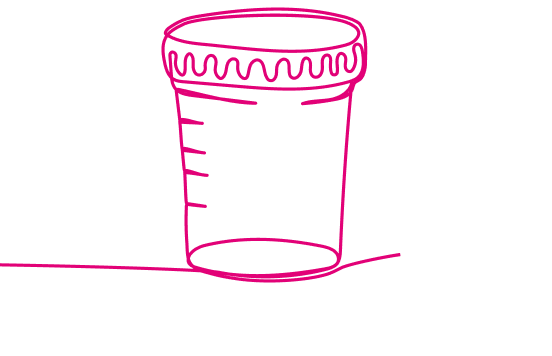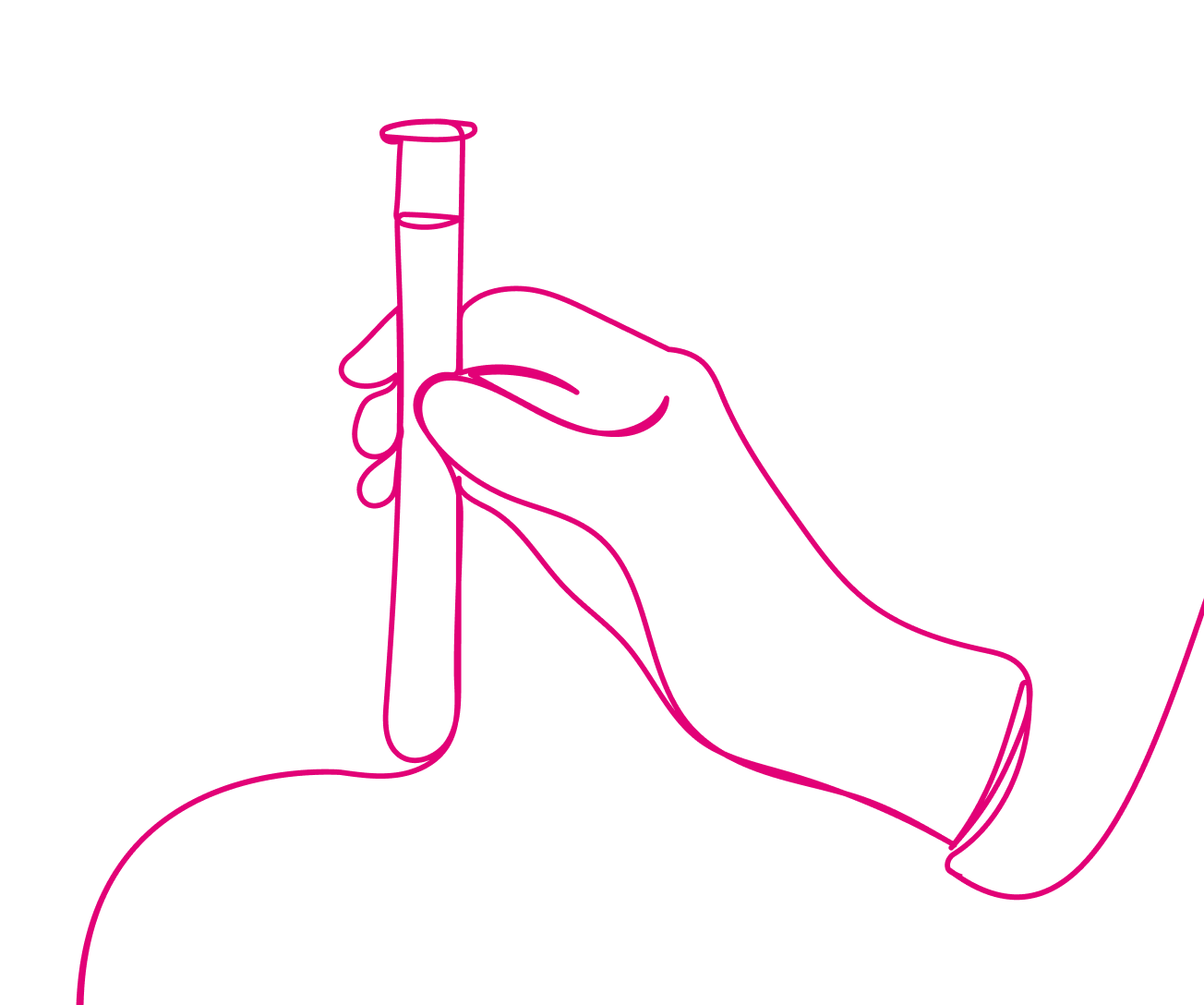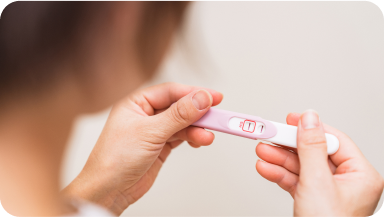In doing this, they will start by gathering information about you (and your partner if you are presenting as a couple) from your medical history and results of physical exams and tests.
Click on the topics to get prepared for questions that your fertility specialist may ask you and your partner (if presenting as a couple).
- Are you (or your partner) regular?
- How long does your period last?
- What’s the consistency of your discharge?
- Have you or your partner been pregnant before?
- How many children do you have?
- Do you or your partner have a child (or children) from previous relationship(s)?
- How long have you been trying?
- Do you have any chronic medical conditions?
- Have you undergone any significant surgeries?
- Has anyone in your family had trouble getting pregnant?
- Do any medical conditions run in your family (including genetically inherited diseases)?
- Are you a smoker?
- How many alcoholic beverages do you consume in a week?
- How often do you exercise?
Types of tests they may order
Click on the tests below to learn how they are used.Blood tests

Blood tests
For those assigned female at birth
For those assigned male at birth
Ovarian reserve testing4, 22
Provides a better understanding of egg quantity. This testing often begins with hormone assessments at the start of a menstrual cycle.
Anti-Mullerian hormone (AMH) testing23
Assesses AMH levels, which helps identify low ovarian reserves and helps predict how someone may respond to certain forms of ovarian stimulation.
Hormone testing22
Provides a better understanding of how hormones relating to reproductive processes are functioning.
Ovulation testing22, 24
A common blood or urine test that measures hormone levels to determine when ovulation is likely to occur.
Urine tests

Urine tests
For those assigned female at birth
For those assigned male at birth
Hormone testing24
Provides a better understanding of how hormones relating to the menstrual cycle are functioning.
Ovulation testing22, 24
A common blood or urine test that measures hormone levels to determine when ovulation is likely to occur.
Imaging tests

Imaging tests
For those assigned female at birth
For those assigned male at birth
Imaging (such as MRI or ultrasound)22
Used to examine whether there are any underlying diseases, conditions or abnormalities.
Hysterosalpingography22
Assesses whether there are any blockages in the uterus or fallopian tubes. The procedure begins by injecting dye into the uterus, and is followed by an X-ray to check whether there are any blocks or leaks.
Pelvic ultrasound25
Used to examine whether there are abnormal follicles or problems with the ovaries or uterus.
Semen analysis

Semen analysis
For those assigned female at birth
For those assigned male at birth
Semen analysis6
Provides a better understanding of semen quality. After a specimen of semen is collected, it is sent to a lab, which analyses the count, motility and morphology of sperm.
- Family planning NSW. Infertility. Available at: https://www.fpnsw.org.au/factsheets/individuals/fertility-and-infertility/infertility. Accessed April 2024.
- World Health Organization. Infertility. September 2020. Available at: https://www.who.int/news-room/fact-sheets/detail/infertility. Accessed April 2024.
- Cleveland Clinic. Diminished ovarian reserve. Available at: https://my.clevelandclinic.org/health/diseases/23975-diminished-ovarian-reserve. Accessed April 2024.
- Your Fertility. Age and reproductive outcomes. Available at: https://www.yourfertility.org.au/sites/default/files/2018-11/Age_and_reproductive_outcomes.pdf. Accessed April 2024.
- Your Fertility. Thinking about having a baby? Available at: https://www.yourfertility.org.au/sites/default/files/2019-03/Thinking_about_having_a_baby_resource.pdf. Accessed April 2024.
- Healthline. What is a normal sperm count? Reviewed August 2018. Available at: https://www.healthline.com/health/mens-health/normal-sperm-count. Accessed April 2024.
- Healthline. How does sperm morphology affect fertility? Reviewed August 2017. Available at: https://www.healthline.com/health/sperm-morphology. Accessed April 2024.
- Medical News Today. How does sperm motility affect fertility? Reviewed November 2017. Available at: https://www.medicalnewstoday.com/articles/320160. Accessed April 2024.
- Cleveland Clinic. Female reproductive system. Reviewed November 2022. Available at: https://my.clevelandclinic.org/health/articles/9118-female-reproductive-system. Accessed April 2024.
- Oyelowo T. Menstrual cycle. In: Mosby’s guide to women’s health. Missouri: Mosby, 2007: pp 11–15.
- MSD Manual. Overview of infertility. Reviewed September 2020. Available at: https://www.msdmanuals.com/en-nz/professional/gynecology-and-obstetrics/infertility/overview-of-infertility. Accessed April 2024.
- Jain M, Singh M. Assisted reproductive technology (ART) techniques. In: StatPearls. Treasure Island: StatPearls Publishing, 2023. Available at: https://www.ncbi.nlm.nih.gov/books/NBK576409. Accessed April 2024.
- Oyelowo T. Anatomy, physiology, and neurology. In: Mosby’s guide to women’s health. Missouri: Mosby, 2007: pp 1–7.
- Patton KT, et al. Anatomy and physiology, 11th ed. Missouri: Elsevier, 2022.
- National Institute of Child Health and Human Development. What are some possible causes of female infertility? Available at: https://www.nichd.nih.gov/health/topics/infertility/conditioninfo/causes/causes-female. Accessed April 2024.
- Centers for Disease Control and Prevention. Infertility FAQs. Available at: https://www.cdc.gov/reproductivehealth/infertility/index.htm. Accessed April 2024.
- Mayo Clinic. Female infertility. Available at: https://www.mayoclinic.org/diseasesconditions/female-infertility/symptoms-causes/syc-20354308. Accessed April 2024.
- Mayo Clinic. Pelvic inflammatory disease (PID). Available at: https://www.mayoclinic.org/diseasesconditions/pelvic-inflammatory-disease/symptoms-causes/syc-20352594. Accessed April 2024.
- Oyelowo T. Pelvic inflammatory disease. In: Mosby’s guide to women’s health. Missouri: Mosby, 2007: pp 168–71.
- Cleveland Clinic. Uterine factor infertility. Reviewed January 2020. Available at: https://my.clevelandclinic.org/health/diseases/17738-uterine-factor-infertility. Accessed April 2024.
- Healthy Male (Andrology Australia). Male infertility. Reviewed May 2018. Available at: https://www.healthymale.org.au/files/resources/male_infertility_fact_sheet_healthy_male_2019.pdf. Accessed April 2024.
- Mayo Clinic. Infertility. Available at: https://www.mayoclinic.org/diseasesconditions/infertility/symptoms-causes/syc-20354317. Accessed April 2024.
- Gnoth C, et al. Hum Reprod 2008; 23(6): 1359–65.
- Zhang LJ, et al. BC Med J 2020; 62(9): 319–22.
- Healthline. Polycystic ovary syndrome (PCOS): symptoms, causes, and treatment. Reviewed April 2021. Available at: https://www.healthline.com/health/polycystic-ovary-disease. Accessed April 2024.





